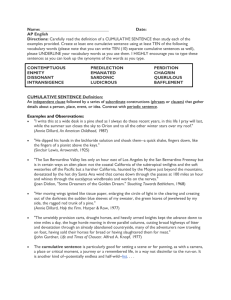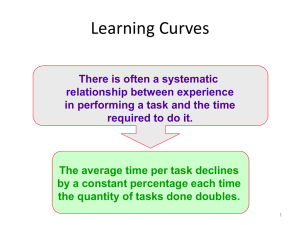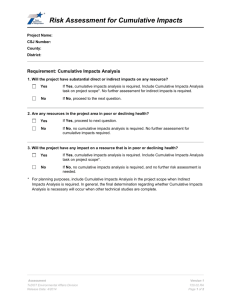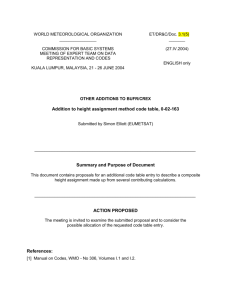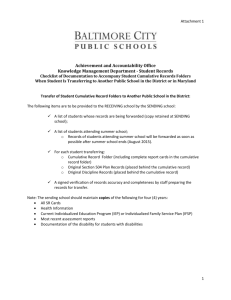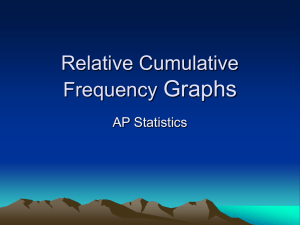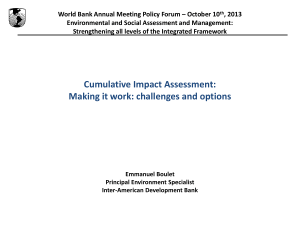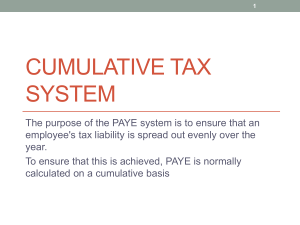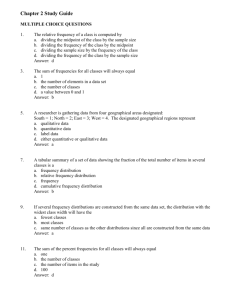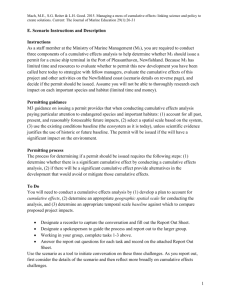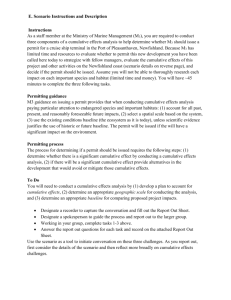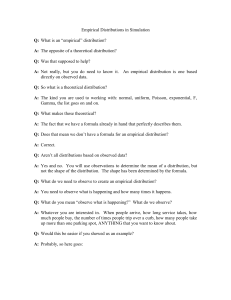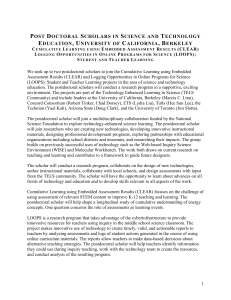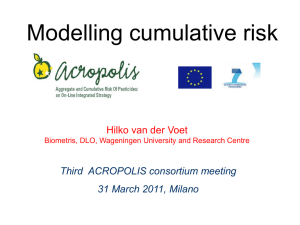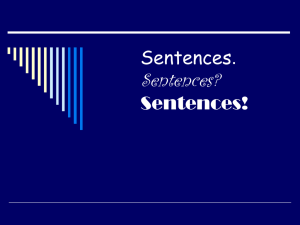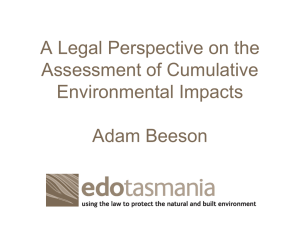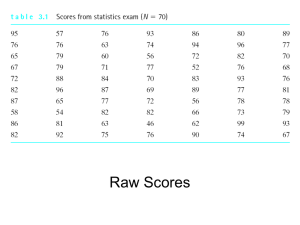Ex-ante Assessment of Cumulative Costs
advertisement
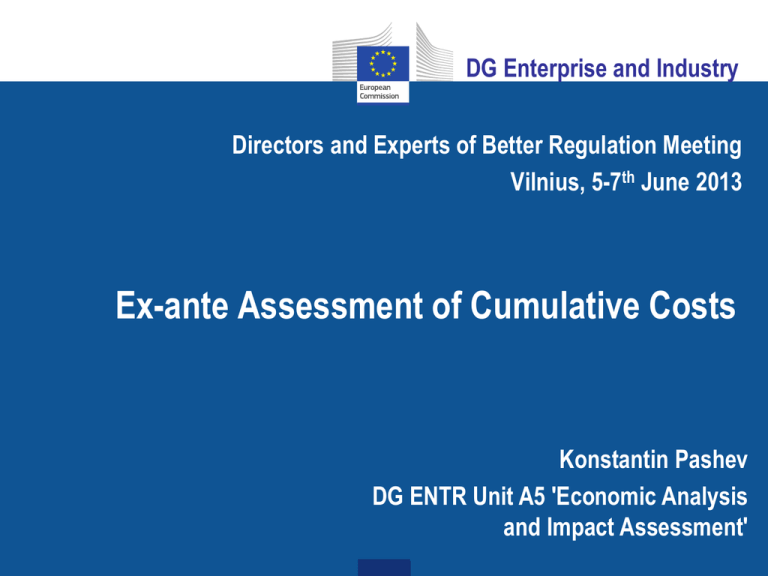
DG Enterprise and Industry Directors and Experts of Better Regulation Meeting Vilnius, 5-7th June 2013 Ex-ante Assessment of Cumulative Costs Konstantin Pashev DG ENTR Unit A5 'Economic Analysis and Impact Assessment' DG Enterprise and Industry Outline 1. Concept of cumulative cost and its assessment 2. Why care for cumulative rather than additional cost 3. Cumulative cost and the integrated approach to IA 4. State of play and the way ahead 2 DG Enterprise and Industry Cumulative cost assessment Taking into account all costs borne by the affected sector when: evaluating the actual impacts of EU legislation (expost evaluation); assessing the expected impact of new initiatives (exante impact assessment). 3 DG Enterprise and Industry Costs can build up in many ways New costs add up to existing ones in the same regulatory area (e.g. new information obligations added to existing ones) One sector affected by regulations in various areas (e.g. safety-at-work costs on top of product information obligations); costs may build up at each level of government (EU, national and subnational), sometimes aggravated by 'gold plating'; implementing legislation may add new cost to primary legislation, administrative and enforcement practices may add additional compliance costs due to administrative discretion In a package of measures impact-assessed separately Economic costs of regulations add up to compliance costs 4 DG Enterprise and Industry Accumulation of costs is usually neglected 1. IA is focused on net benefits for society and chooses the option which maximizes them 2. It looks at additional (flows of) costs and benefits looking at the marginal impact of the new legislation 5 DG Enterprise and Industry Why this is a problem? 1. Cost of compliance with existing legislation is not a sunk cost, large part of it is recurrent cost 2. In contrast to costs and benefits in investment projects (where this is borrowed from) in legislation costs and benefit may accrue to different stakeholders. Net benefits for society may look positive but there is the risk of irreversible damage to those that pay the cost (hysteresis effect) 3. Most of the costs come in the short to medium term, while benefits come in the medium to long term. The longer the period the more acceptable the initiative in terms of net benefits 6 DG Enterprise and Industry Cumulative cost assessment in the integrated approach to IA Is the balance tipped in favour of costs? Benefits of legislation cannot be ignored But excessive regulatory costs entail significant risks for the economy and for compliance, and hence for delivering the economic, social and environmental benefits of the regulation. Cumulative benefits vs. cumulative costs? while societal gains may only increase if benefits accumulate, if costs accumulate, benefits may never realize (again because of the inter-temporal problem) 7 DG Enterprise and Industry State of play 1. The issue raised by many stakeholders in recent years 2. Considering cumulative cost in ex-post evaluation: Fitness checks 3. New focus on cost of legislation in the REFIT Communication 4. Discussion about integrating the requirement to consider cumulative costs in the context of the upcoming revision of the IA Guidelines 8 DG Enterprise and Industry Questions for discussion 1. What are the benefits and costs of accounting for cumulative effects for better regulation. Would that be an improved CBA or better risk (of hysteresis effect) assessment? 2. What are according to you the challenges related to integrating CCA in the IA 3. How to integrate cumulative cost without departing from the principle of proportionate analysis and from the integrated approach to IA 4. Could there be a reliable metrics of the critical mass of compliance costs that would lead to hysteresis effect? 9

